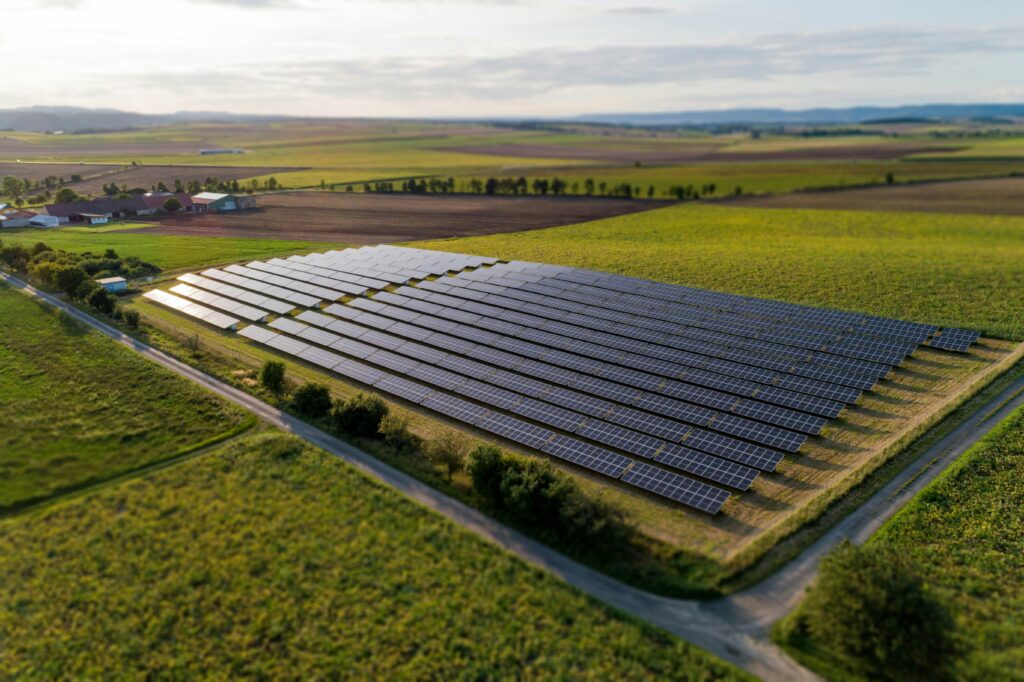Even journalists also know, when the subject is not climate, that science is never settled, that claims that it is are somewhere between obtuse and sinister and that new discoveries are cool. Indeed many outlets were excited, in a good way, to report variants of the Australian Broadcasting Corporation’s “Astronomers have detected a mystery stellar object that emitted pulses of light for two minutes every 44 minutes… the first to emit both radio waves and X-rays... Researchers expect to learn more about these objects as future telescope observations are made, possibly opening up new ways to understand matter and nuclear fusion.” And even in the wacky world of climate, where one ocean current or another is bound to doom us presently, Climate Cosmos (via MSN as one of its top stories) tells us “Experts Warn a Forgotten Climate Pattern Might Return in 2025… While the precise implications of the changes were not wholly clear, researchers said large numbers of the planet’s marine species and ecosystem services could be affected.” It couldn’t possibly be cool to discover something new about the climate. We have doom to monger so the science is totally settled that doom looms. Somehow. For sure.
Thus everything that turns up on climate was expected even if it wasn’t, and its implications are totally clear even if they’re not. Hence the BBC, also via MSN, moans in: “‘Ocean darkening’ a cause for concern – scientists”. Nobody really knows why, or what will happen. Only that doom looms. “While the precise implications of the changes were not wholly clear, researchers said large numbers of the planet’s marine species and ecosystem services could be affected.” Could. Unless they’re not. And (wait for it) Dr. Thomas Davies of the University of Plymouth “said ocean darkening could have an impact on the air humans breathe, the fish they eat and the world’s ability to fight climate change.” Wuk wuk wuk.
Before we all die, also we want to mention Scientific American chortling that “physician and self-taught epidemiologist Mildred Weeks Wells and her husband, sanitary engineer William Firth Wells… proved that infectious pathogens could spread through the air over long distances. But… the scientific establishment… ignored their findings for decades.” Gosh, imagine the establishment closing ranks to ostracise those who question orthodoxy.
It’s extraordinary just how unsettled the science turns out to be. In keeping with modern journalistic practice the BBC article neither links to the darkening article, which is easily found here, nor mentions that the lead author is one Dr. T. Davies of the U of Plymouth. Details, details. But if you do check it out, funnily enough, the only mention of climate in the actual paper is:
“Darkening has typically been associated with coastal regions. Our results indicate that increasing attenuation of light is not restricted to the coastal zones but also widespread in the major oceans, particularly in polar regions, the North East Atlantic and North West Pacific Oceans. This suggests that light attenuation across the oceans is not driven exclusively by localised nutrient loading, run-off and upwelling in coastal regions. While these factors will clearly influence light attenuation in neritic coastal waters (Aksnes et al. 2009; Blain et al. 2021; Frigstad et al. 2023; Opdal et al. 2024), darkening in the open oceans may be driven by warming of the surface oceans and climate-driven changes in the ocean circulation patterns (Böning et al. 2008; Cael et al. 2023; Martínez-Moreno et al. 2021; Toggweiler and Russell 2008).”
Got it? We started with climate change maybe making the oceans darker, if only we had some clue how that ocean-current business even works, and rapidly got to darker oceans don’t absorb CO2 or do whatever it was we were hoping they would to stop the runaway rhetoric um make that warming. All of which is, in fact, a great big bundle of uncertainty.
Indeed in a recent piece “Ten Provocative Graphs/ Guaranteed to get you thinking”, Roger Pielke Jr. starts with “The Earth is Darkening”, based on a James Hansen post that the Earth’s “albedo”, its overall reflectivity due to all factors measured by what proportion of incoming solar radiation gets bounced right back out again, has fallen by around 0.5% in just the last quarter-century. Which is obviously highly significant because it would have a huge warming effect and, if it did, then clearly CO2 didn’t cause that warming, falling albedo did, and the dreaded “carbon pollution” may be sent away more or less empty-handed. But what’s also important is that we don’t really know why it happened, science being not just unsettled but often a lot further from having even a dogmatically wrong explanation than we are often told.
In the ocean current of doom case the same is true. That piece starts:
“The Pacific Decadal Oscillation, or PDO, is the climate pattern that has recently captured the attention – and concern – of climate experts. This phenomenon unfolds over decades, with the Pacific Ocean switching between warm and cool phases…. Scientists have long kept an eye on the PDO because of its far-reaching impact, but for years, it faded from public attention as other climate issues took center stage. Now, as 2025 approaches, renewed signals in ocean temperatures have experts worried that this forgotten pattern might soon reemerge in a big way.”
Concern. Worried. And what seems to be the problem? Well apparently when the PDO is strong, some places are wetter and others drier, whereas when it’s not the reverse is true. But also:
“Looking back, the PDO has made its mark on history in surprising ways. During its most recent warm spell, from the late 1970s to the late 1990s, the world saw some striking climate anomalies. Temperatures surged, storms shifted course, and both droughts and floods became more pronounced in different regions. NOAA’s archives show that these shifts weren’t just flukes – they were connected to changes in the PDO.”
Now hang on. Haven’t you all, including NOAA, spent the last 30 years or more telling us it was rising temperatures due to CO2 that did all this damage? Now suddenly it’s an ocean current. You might have mentioned it sooner, if only because, obviously, the more climate change is attributed to things that are not human CO2, the less there is left to blame on human CO2. It’s kind of important to the story.
Especially since after mentioning various subtle signs that it might be back, or back up, or whatever, they say “The stakes are high, as even a slight shift in the PDO can mean big changes for millions of people.” Oh. Ocean currents have a big impact on the climate? Thanks for letting us know that you finally realized it given that as the National Oceanic and Atmospheric Administration (not that the U.S. government actually administers the air or the seas) it’s kind of your job and oceans are even listed first.
Also, “can” isn’t “will.” And the piece then descends into farce with:
“Dr. Emily Thompson, a climatologist at the University of California, recently shared, ‘A warm-phase PDO could trigger a cascade of extreme weather events we’re not fully prepared for.’ These might include more frequent and intense storms in some regions, prolonged droughts in others, and greater variability in seasonal weather. Many experts stress that such changes could disrupt food production and supply chains, driving up costs and putting pressure on already stressed communities. While some uncertainty remains, the consensus is clear: preparation is key, and waiting to react is not an option.”
So there’s a could, a might, a could and some uncertainty, followed by a clear consensus that we should definitely do we know not what since, if we don’t know what’s going to happen, how can we react appropriately without waiting to… see what it is? Stockpile tinned food? Head for the hills? Unplug all the power plants? Read something else?
If the latter doesn’t appeal fundamentally, the same author, listed on Climate Cosmos as “an accomplished atmospheric scientist” in case anyone had doubts, possibly because it also says “His work also involves collaborating with environmental organizations and policy makers to inform climate-related decisions and strategies” so he’s kind of half neutral observer, half advocate, also just told us:
“As the warmth of spring begins to envelop the nation, meteorologists are sounding the alarm about a potentially intense summer ahead. With El Niño fading away, the usual climate patterns are shifting, and this could mean significant changes for the United States. Buckle up, because this summer might be hotter and more unpredictable than ever!”
Why?!?!?!? Well, see:
“El Niño, a climate phenomenon known for warming ocean temperatures in the Pacific, is rapidly weakening and is expected to vanish by June. This natural occurrence has historically influenced weather patterns across the globe, often bringing wetter conditions to some areas and droughts to others.”
Gosh. Two for the price of one. Two different ocean currents affecting climate, and both making it wetter here and drier there or vice versa. But the main point, to us anyway, is his immediately subsequent statement that:
“But with its departure, we’re left wondering what fills the gap. Just like when a familiar character exits a story, the plot can take unexpected turns.”
So the science isn’t settled? Or rather, it is apart from not knowing what’s going to happen or why or what it will mean. The rest the models nail every time.
Which brings us to the most infuriating aspect of the settled science/unsettled science business. In commenting on the WMO study we analysed in detail elsewhere this week (and, to their credit, getting right that it was just the WMO), the Washington Post bellows:
“Seven years ago, the U.N. Intergovernmental Panel on Climate Change predicted that the world wouldn’t warm 1.5 degrees Celsius above preindustrial levels until 2040. Then two years ago, the group predicted the world would pass that threshold between 2030 and 2035. Now, new data from the World Meteorological Organization released Wednesday indicates that Earth will cross this point in just two years. The accelerated timeline is due to higher-than-expected temperatures over the past few years, diminishing air pollution that cooled the Earth and greenhouse gas emissions that continue to rise globally despite the growth of renewable energy. And it means that irreversible tipping points in the climate system – like the melting of Arctic ice sheets or the wide-scale collapse of coral reefs - are closer at hand than scientists previously believed.”
You get the idea? They’re telling us all these brainiacs with their suites of high-powered computer models were unable to predict what would happen even two years out, and the fact that data they failed to foresee has thrown their 2023 projections into a cocked hat means we should totally believe their 2025 ones because the unsettled science is totally settled and the melting of the ice sheets and death of the coral they keep predicting is even more certain because their other predictions collapsed instantly.



I shall worry about Cliemate crisis when the Dolphins disappear....